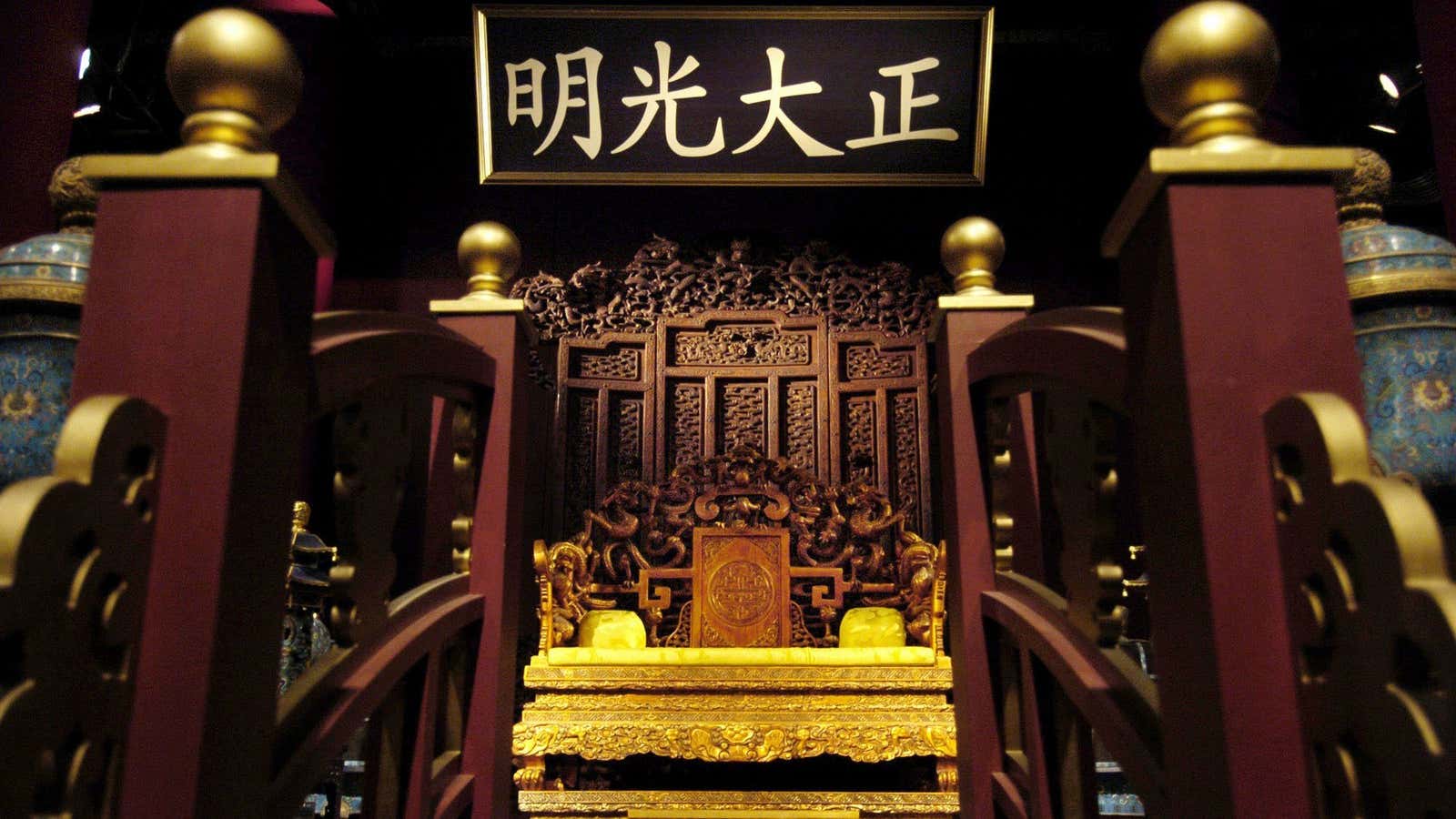Kim Jong-nam, the estranged half-brother of North Korean leader Kim Jong-un, was killed last week in Malaysia at age 46. The eldest son of late dictator Kim Jong-il had long been distant from North Korean politics and had indulged in a taste of casinos, high-end hotel bars, and other extravagances during the last decade of his exiled life.
The motives behind his murder remain shrouded in mystery, but a look into the long history of fratricide in Chinese royal families shows why the regime in Pyongyang may have wanted Kim Jong-nam dead. In imperial China, crown princes who failed to secure the throne usually ended up in tragedy. And an out-of-favor heir with little chance to ascend to the height of power always remains a possible leadership candidate—and a threat to the sibling in power until his death.
One of the most epic succession battles in the Middle Kingdom happened in the Qing dynasty (1644-1912), when the Kangxi Emperor was indecisive about which son should succeed him after a withdrawal of his earlier decision to name his second son the crown prince. Nine of his sons fought for years to become the next emperor—Yinzhen, the 4th prince who would later be known as the Yongzheng Emperor, emerged as the winner at his father’s deathbed in 1722.
Yongzheng’s younger half-brother Yunsi, a major rival in the power struggle, was promoted to a key post shortly after the new emperor’s coronation. It later emerged that it was Yongzheng’s move to keep Yunsi under close watch and prevent him from grabbing power from behind the scenes. In less than four years, Yunsi was stripped of his princely title, forced to rename himself a derogatory slur meaning “pig,” and finally died under house arrest.
Emperors of the Tang dynasty (618-907) were also obsessed with sibling killings. 31 members of the Tang royal family had been entitled heirs apparent, and 19 (pdf, page. 1) made it to the throne eventually, according to historian Hu Jian. Of the 12 who failed to ascend to the throne, Hu said, nine were murdered by incoming or newly crowned emperors during or after the leadership transition, and one died after years in jail. Once a prince is considered an heir apparent, Hu commented, he has “already stepped one foot onto the guillotine.”
Hu Hai, the second emperor of the Qin dynasty (221-206 BC), is remembered as one of the worst tyrants in Chinese history. Hu killed all his brothers and sisters after seizing power in 210 BC through a conspiracy led by his tutor, chief eunuch Zhao Gao. Three years later, amid uprisings across the country, Zhao conspired to force Hu to commit suicide as he himself tried to usurp the throne.
On his last day, Hu begged soldiers surrounding him at his palace to show some mercy, saying he could be left alone as a king of one of the Qin empire’s 36 prefectures, or a lord of 10,000 households, or even just an ordinary person. Of course, none of his suggestions were accepted.
Correction: An earlier version of this article erroneously stated that Yinzhen is known as the Qianlong Emperor; in fact, he was the Yongzheng Emperor.
